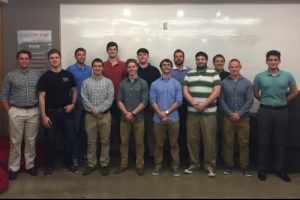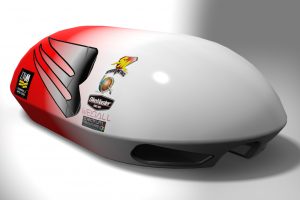Imagine traveling from Los Angeles to San Francisco – a distance of almost 400 miles – in 30 minutes. Elon Musk, the former PayPal entrepreneur and Tesla Motors CEO, has, and he is enlisting college students – including 15 from UWM – to help design the futuristic Hyperloop system.
A group of UWM engineering students was one of the 27 collegiate teams chosen to advance in the high-stakes Hyperloop Pod Design Competition held earlier this year.

Dubbed Mercury Three, the UWM team is now building a fully functional, three-quarters-scale model of their vehicle, or “pod,” to test on a one-mile track that Musk is constructing near the California headquarters of his aerospace manufacturing company SpaceX. The competition’s test phase is slated for January 2017.
Musk first announced his plans to build Hyperloop in 2013 on the SpaceX website. He envisions people and cargo traveling in aluminum pods that follow a frictionless track, reaching speeds of more than 700 miles per hour. The system would be much quicker and cost far less than high-speed rail, he said.
To understand how Mercury Three’s pod works, said team captain Juan Barreto, picture the pod hovering just over the rail rather than being physically connected to it.

“Our system manipulates the magnetic field and the properties of the aluminum rail beneath the pod to achieve levitation,” Barreto said.
It’s roughly the same idea as magnets with the same pole repelling one another, he added, except that only the pod is generating a magnetic field. The rail is linked to the pod using a combination of techniques, including gyroscopic sensors that monitor possible displacement.
UWM’s 13-member Mercury Three team formed in 2015.


